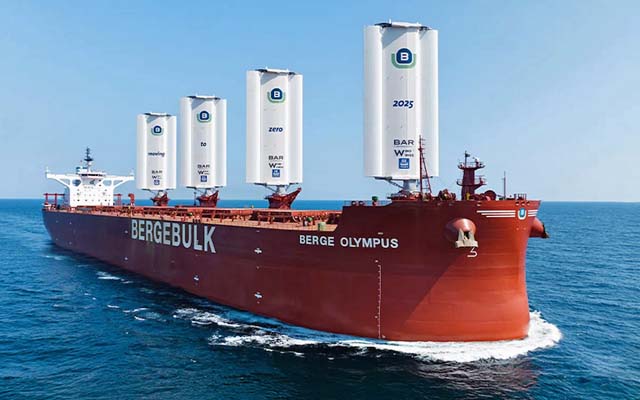According to a new whitepaper published by DNV, a surge in industry interest combined with systems builders and yards scaling up production and installation capacity, is set to accelerate growth in orders for wind-assisted propulsion systems (WAPS) in the coming years.
In response to this trend, the whitepaper provides a detailed look at WAPS technologies, their onboard implementation, and potential fuel savings to help shipowners determine whether they are a viable business option for their vessels and operations. DNV’s whitepaper explores the design and operational factors influencing WAPS fuel savings and provides steps for evaluating the technical feasibility of new systems, from concept to implementation. The paper includes two case studies in EU waters modelling how different WAPS installations can effectively reduce fuel costs and emissions in compliance with EU ETS and FuelEU Maritime.
Knut Ørbeck-Nilssen, CEO DNV Maritime, said: “As we navigate the maritime energy transition, it’s crucial to consider all options for decarbonisation. And as more verified data comes in, the business case for WAPS technologies is building. They are already delivering significant fuel savings when matched to the right vessel type and operational profile. And as part of the suite of new energy efficiency technologies, WAPS are stepping up to deliver immediate emissions reductions and play a growing role in the maritime decarbonisation journey.”
Retrofitting WAPS is possible for almost any ship with sufficient deck space and unobstructed airflow, even if not originally designed for sails. However, vessels with WAPS integrated into the design offer even greater opportunities for optimisation. Currently, 75% of the WAPS fleet are retrofits, primarily tankers and general cargo vessels. Rotor sails have been the preferred technology for the bulk and tanker sectors (54% share of systems installed), while suction sails are the main choice for general cargo ships (67%).
Hasso Hoffmeister, Senior Principal Engineer, DNV, said: “Current WAPS technologies use advanced control and automation systems, combining aerodynamics, automation, computer modelling, and modern materials. Today, these technologies are not widely adopted but show significant promise as a component in hybrid propulsion systems. Looking ahead, we might see the first pure wind powered modern large cargo vessel, ‘Orcelle’, contracted in the next few years.”
Drivers behind the rapid WAPS uptake are also tied to economic benefits of complying with current and future regulations like EEDI, EEXI and upcoming IMO regulations that set CO2 emission requirements for new and existing ships. WAPS can help meet these requirements through a correction factor as well as improve CII ratings by reducing fuel consumption.
DNV says it has been at the forefront of developing rules and standards for verifying and certifying WAPS and their integration onboard, publishing the first class notation for ships using WAPS in 2019. This notation is supported by the ST-0511 Wind Assisted Propulsion Systems certification standard. DNV’s WAPS Ready notation, which uses a modular approach to verify compliance for future WAPS installations and DNV’s new recommended practice (RP), which proposes an on/off methodology to measure performance, will be updated in 2025.
The whitepaper can be downloaded here.
Image: DNV’s latest whitepaper looks at how WAPS can provide fuel and emissions savings (source: DNV)



